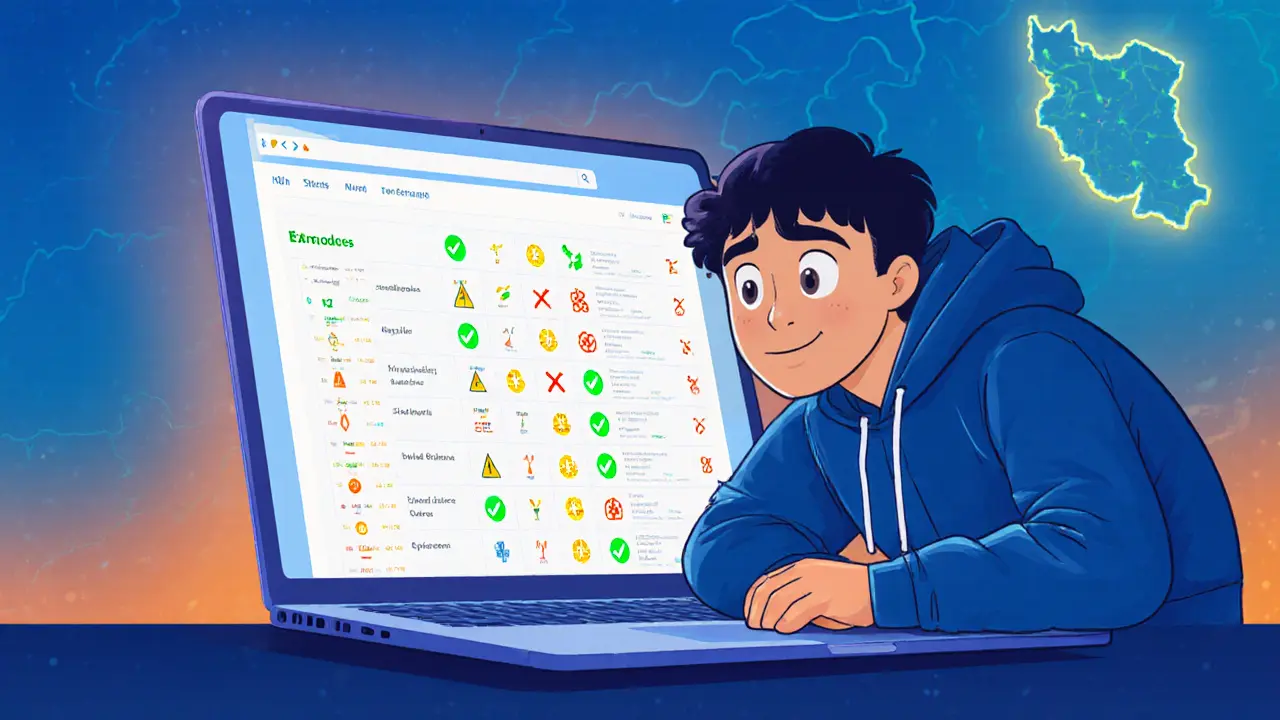When talking about Tether sanctions on Iran, the series of regulatory and enforcement measures that target the USDT stablecoin’s use by Iranian individuals and entities. Also known as USDT sanctions in Iran, it shapes how crypto flows across borders and forces users to seek alternatives.
The Tether sanctions Iran story is evolving fast, and every crypto enthusiast with a foot in the market should understand the moving parts. Tether (USDT), a dollar‑pegged stablecoin issued by Tether Ltd. is the asset most directly affected. Iran, a nation under long‑standing U.S. sanctions and with a growing crypto community often turns to decentralized exchanges, platforms that operate without a central authority and can bypass traditional financial controls to trade USDT. Meanwhile, sanctions, legal tools used by governments to restrict financial activity with targeted parties drive compliance teams to block wallets, freeze tokens, and monitor transaction patterns.
First, the sanctions encompass several regulatory actions: the U.S. Treasury’s Office of Foreign Assets Control (OFAC) adds Iranian wallet addresses to its Specially Designated Nationals (SDN) list, then exchanges—centralized or not—are required to refuse service. That creates a direct link: Tether sanctions on Iran encompass OFAC listings. Second, the restriction forces Iranian traders to lean on DEXs like Uniswap, PancakeSwap, or emerging Polygon‑based platforms, because decentralized exchanges enable Iranian users to access USDT despite sanctions. Third, many projects add extra layers of compliance—KYC checks, transaction‑monitoring bots, and token‑freezing smart contracts—to stay clear of penalties, illustrating that Tether requires compliance with sanctions to operate globally.
Practically, a user in Tehran might route USDT through a privacy‑focused DEX, then swap it for a local token or a privacy coin that isn’t on the SDN list. This two‑step approach reduces exposure but adds transaction fees and latency. Others use VPNs or proxy services to hide IP locations when accessing DEXs, although that raises legal risk. The trade‑off between accessibility and compliance is a core theme you’ll see across our curated articles.
Our collection below dives into those themes from different angles. You’ll find a deep dive into how DeFi platforms adjust their AML procedures, a step‑by‑step guide for Iranian citizens looking to use DEXs safely, and analysis of how stablecoin liquidity is shifting away from sanctioned regions. Whether you’re a trader, a compliance officer, or just curious about the geopolitical side of crypto, the posts ahead give you concrete data, real‑world examples, and actionable tips to navigate the evolving landscape.

Explore which crypto exchanges are blocked in Iran in 2025, why they’re banned, and how traders navigate domestic rules and international sanctions.